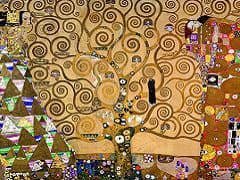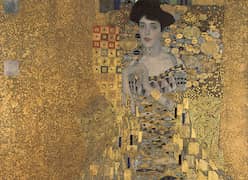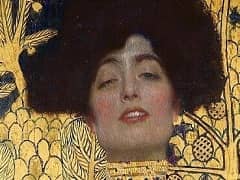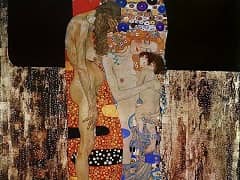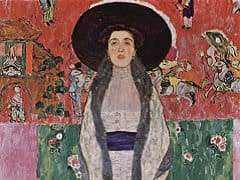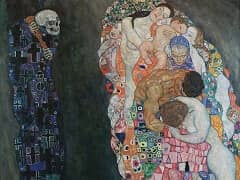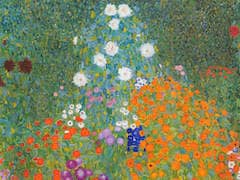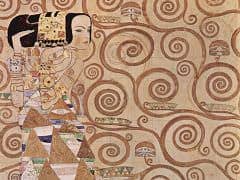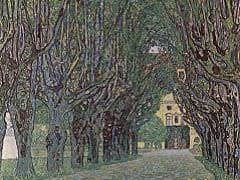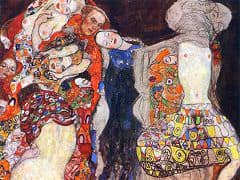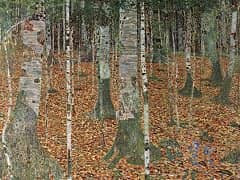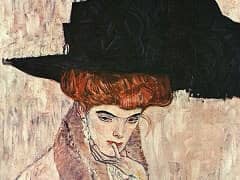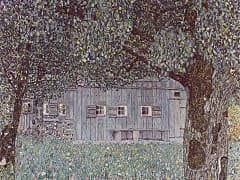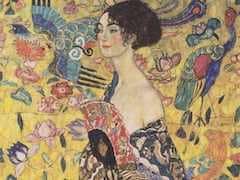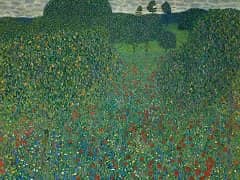Jurisprudence, 1900-1907 by Gustav Klimt
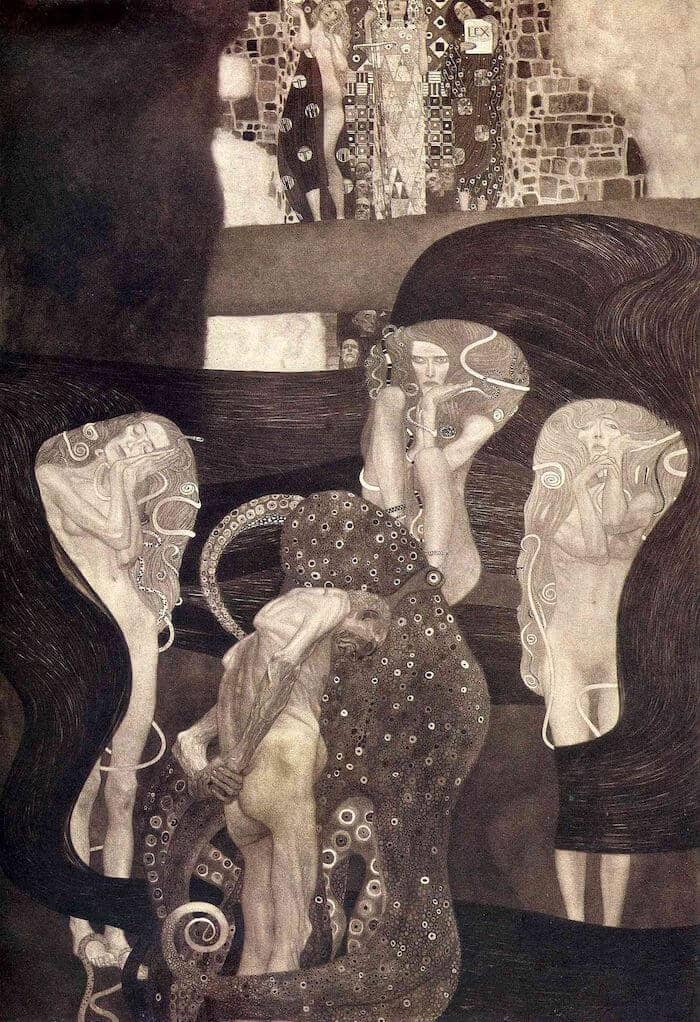
At the eighteenth Secession exhibition, Klimt showed the last of his three University of Vienna Ceiling Paintings, Jurisprudence. At the top of the canvas in the background are three female figures representing Justice, Law and Truth, while behind them are the seemingly decapitated heads of judges. The old man in the foreground, head bowed and entwined by an octopus's tentacles, represents the victim, accused by the three naked females. It is conceivable that Klimt was thinking of his own position while creating this work.
Not surprisingly, the critics hated it as much as Philosophy and Medicine. These first two paintings were stylistically related but the later one looked entirely different, with its simpler and bolder colours and technique, thus giving Klimt's detractors additional cause for complaint. Furthermore, Klimt's representation of Jurisprudence is plainly not optimistic; rather, he sees the law as vengeful, focusing on crime and punishment. The debate raged on. The Ministry refused to cancel the commission but offered to hang the paintings in a museum rather than install them in the Great Hall. However, they did refuse to lend them for the World Fair exhibition in St Louis in the United States. Finally, in 1904, Klimt announced that since his artistic freedom was being constrained by an undeserving public, he was returning all advance payments and that he was keeping the works still in his possession. In view of the amount of official patronage Klimt had received earlier in his career, such a break was all the more dramatic.


